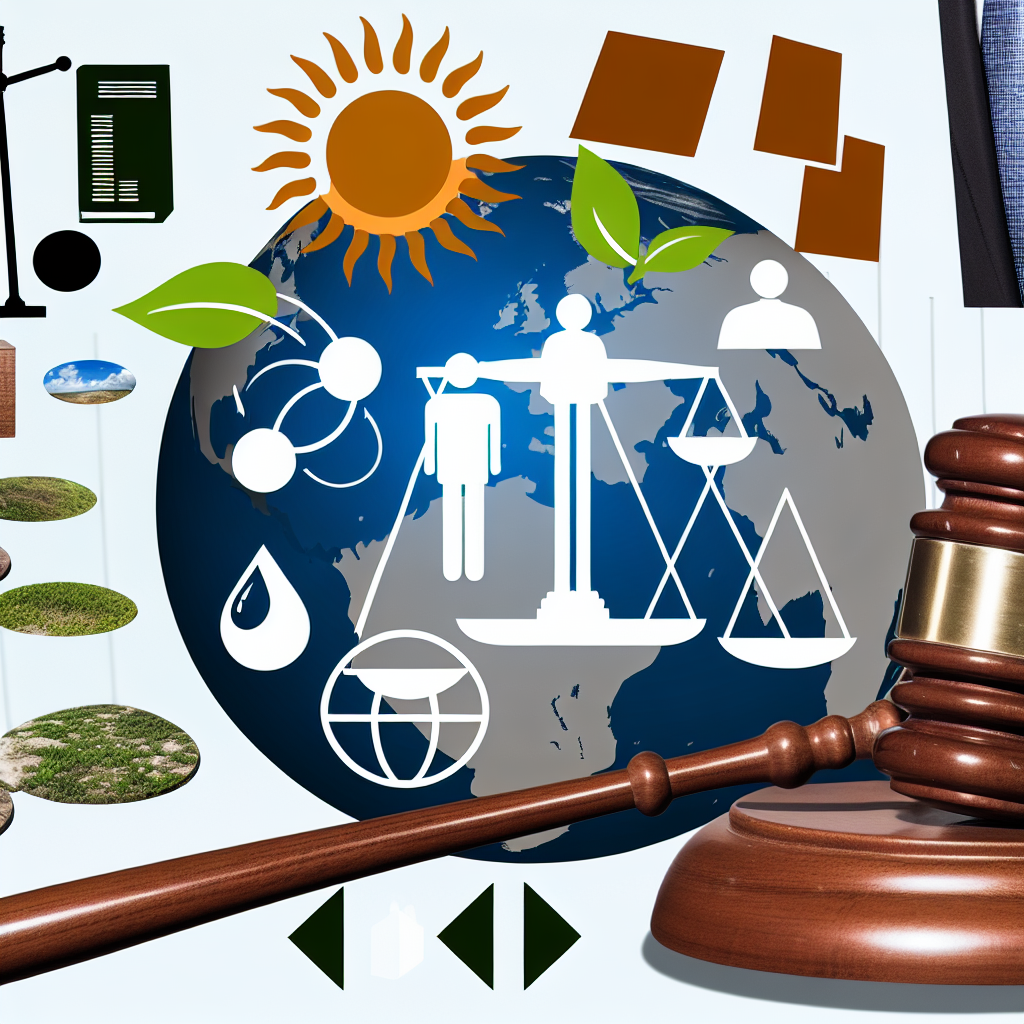
Geoengineering Regulations: Emerging Legal Frameworks for Climate Intervention
Geoengineering Regulations: Emerging Legal Frameworks for Climate Intervention
As climate change poses an unprecedented challenge to our planet, innovative solutions like geoengineering have emerged as potential interventions. The legal frameworks governing such interventions are evolving, reflecting the complexity and urgency of addressing climate change. This article explores the emerging legal landscapes surrounding geoengineering regulations and the influential factors shaping them.
Understanding Geoengineering: A Brief Overview
Geoengineering encompasses a range of techniques aimed at deliberately altering the Earth’s systems to mitigate climate change. These methods can generally be categorized into two groups:
- Solar Radiation Management (SRM): Techniques that aim to reflect sunlight away from the Earth, cooling the planet.
- Carbon Dioxide Removal (CDR): Strategies that involve reducing the levels of carbon dioxide in the atmosphere.
This dichotomy leads to varied regulatory approaches, with certain regions focusing on one method over the other, and significant legal implications for the practice of geoengineering across borders.
The Need for Legal Frameworks in Geoengineering
The legal landscape surrounding geoengineering is essential for several reasons:
- Risk Management: With geoengineering comes the potential for unintended consequences. Legal frameworks can provide guidelines to assess, mitigate, and manage these risks.
- Accountability and Responsibility: Establishing who is responsible for geoengineering activities will reduce ambiguities in accountability when things go awry.
- International Cooperation: Climate change knows no borders, making international legal agreements crucial for coordinated geoengineering efforts.
Current Legal Frameworks Influencing Geoengineering
The Role of International Law
International collaborations play a pivotal role in shaping the legal environment for geoengineering. Key treaties and conventions influencing geoengineering strategies include:
- The Paris Agreement: A global accord that emphasizes voluntary commitments to limit greenhouse gas emissions and highlights the importance of innovative technologies.
- The Convention on Biological Diversity (CBD): This treaty fosters the conservation of biological diversity, complicating some geoengineering methods that may inadvertently harm ecosystems.
- The London Protocol: It regulates the dumping of waste at sea and has been adapted to include discussions on the marine implications of geoengineering projects.
National Regulations: The U.S. and U.K. Approaches
Countries like the United States and the United Kingdom are advancing their own regulatory frameworks for geoengineering:
United States
The U.S. operates under a complex web of federal and state regulations that governs environmental intervention. Key considerations include:
- The National Environmental Policy Act (NEPA): Mandates federal agencies to assess the environmental effects of their proposed actions, which applies to geoengineering projects.
- Soil and Water Conservation Laws: Any geoengineering strategy that impacts land or water resources must consider existing conservation laws.
United Kingdom
The U.K. actively engages in discussions surrounding geoengineering, with frameworks considering:
- The Environmental Protection Act: This act lays down guidelines on environmental assessments for new technologies and practices.
- Governmental Committees: Bodies like the Committee on Climate Change offer recommendations and propose policy measures for geoengineering practices.
Compliance and Ethical Considerations
As the regulatory framework for geoengineering evolves, compliance with both national and international laws is imperative. Ethical considerations also arise, particularly concerning:
- Public Engagement: Involving communities and stakeholders in the decision-making process can help mitigate potential public backlash against geoengineering interventions.
- Equity Concerns: Geoengineering solutions should consider their impacts on marginalized communities, ensuring that benefits and risks are distributed fairly.
The Role of Consultants: Navigating the Legal Terrain
In the context of this evolving legal framework, organizations require expert guidance to navigate the complexities of geoengineering regulations. This is where The Consultant Global excels.
With extensive experience across international, governmental, and private sectors, we provide our clients with tailored consultancy services. Our deep understanding of cross-cultural dynamics and regulatory environments empowers us to effectively assess the needs of diverse clients and advise accordingly.
Moreover, our unique language skills—fluent in English, Turkish, Azerbaijani, Russian, and French—position us exceptionally in the global marketplace, particularly within the Gulf Cooperation Council (GCC) and UAE regions. We truly engage with the intricacies of local laws and cultures, ensuring that our consultancy methodologies align with global best practices while being sensitive to regional nuances.
Future Directions and Recommendations
As geoengineering advances and its legal landscapes mature, stakeholders must prioritize developing comprehensive frameworks that consider:
- Adaptive Management: Regulations should be flexible enough to adapt to evolving scientific understanding and technological developments.
- Interdisciplinary Approaches: Collaboration across disciplines—including environmental science, law, and social sciences—will lead to more robust legal frameworks.
- Public and Private Sector Collaboration: Building partnerships between government entities and the private sector can drive innovative solutions while ensuring regulatory compliance.
Conclusion
The legal frameworks for geoengineering are in their infancy, yet their importance cannot be overstated. As nations grapple with climate change, the responsibilities that come with geoengineering practices emerge, demanding well-structured regulations that encompass ethical considerations, risk management, and international cooperation.
At The Consultant Global, we are committed to being at the forefront of these discussions. Our aim is to partner with businesses and governments to ensure that their geoengineering initiatives are not only effective but also legally compliant and ethically sound. With our commitment to delivering tangible value and fostering inclusion across cultures, we stand ready to guide you through the complexities of geoengineering regulations.




Leave a Reply